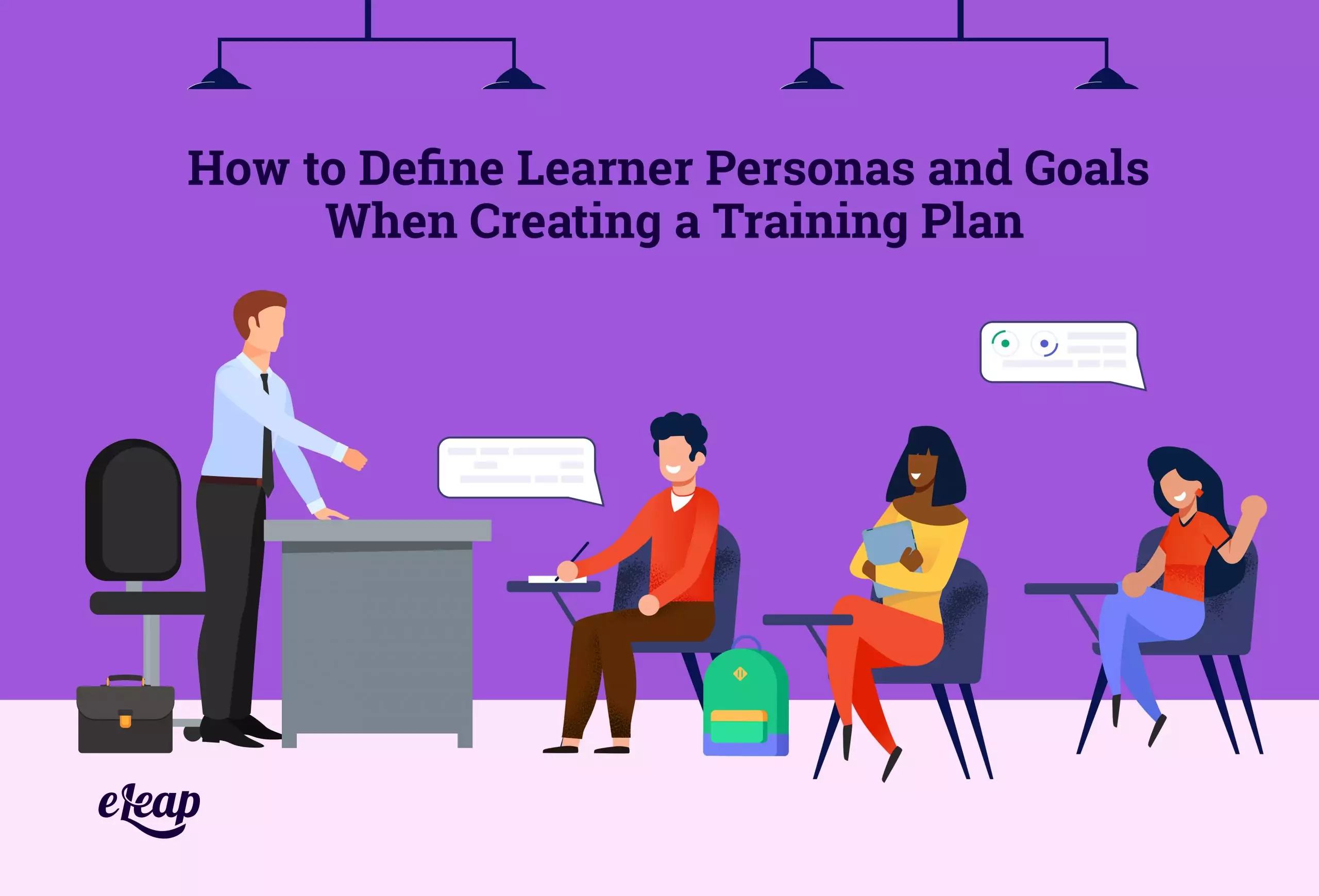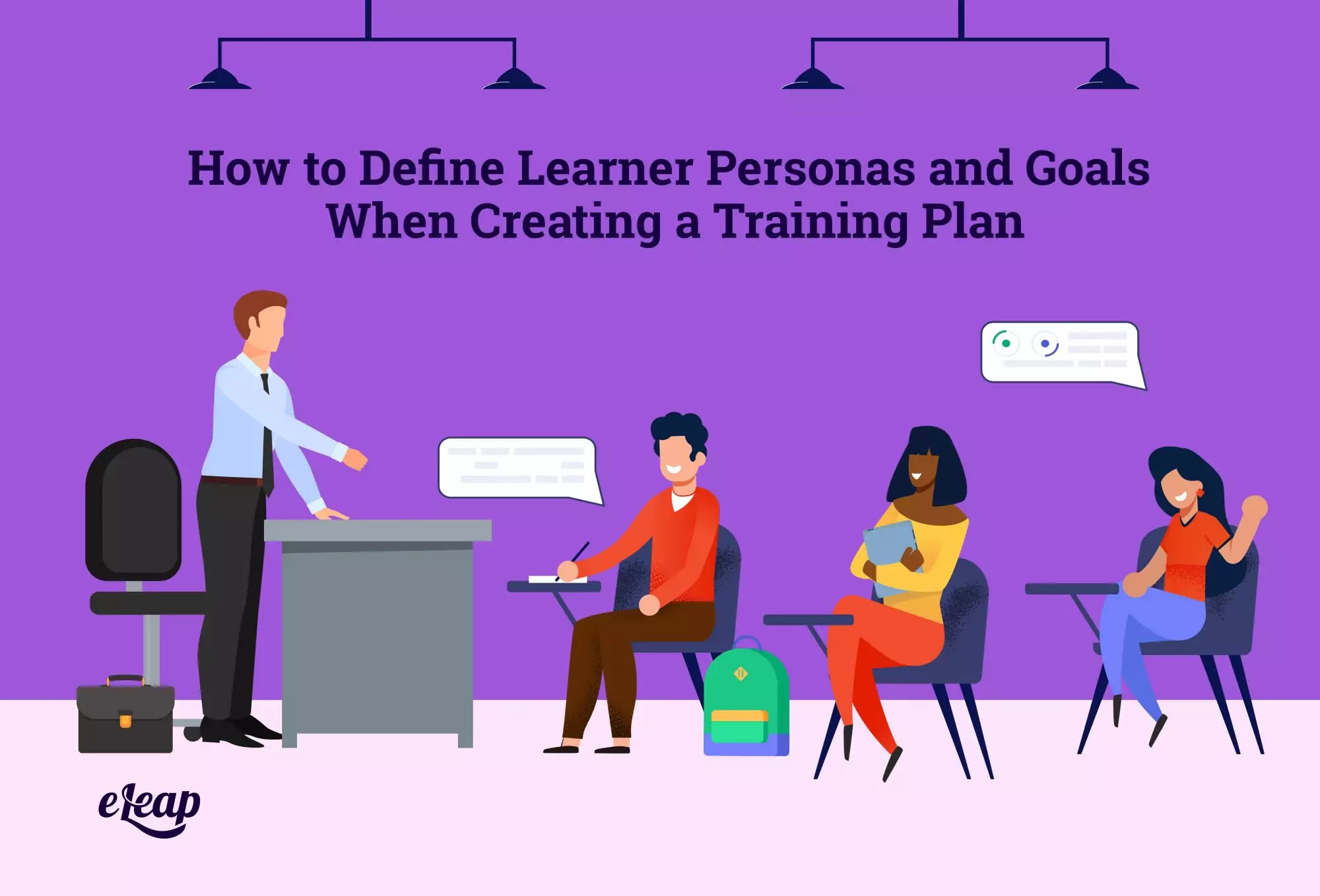How to Define Learner Personas and Goals When Creating a Training Plan

To create a successful learning and development strategy, you must put the learner first. While that seems like common sense, many HR departments and L&D developers fail to do so. Instead of prioritizing learner needs, they prioritize organization goals. Start with creating learner personas to help you focus your L&D initiatives.

That’s understandable, at least to an extent. After all, the organization’s goals should guide L&D to a degree. What’s being learned should ultimately support the organization in achieving important goals. However, that strategy omits the learner, the most crucial part of the equation.
The Unfortunate Reality of the Usual Approach to Learning
Training professionals, HR managers, and others tasked with delivering on L&D initiatives are often time-poor and under pressure from execs to deliver measurable results that often don’t mesh with reality. In addition to the aforementioned mismatch in goals, they also tend to focus on the underlying structure of learning content delivery, namely:
- The training platform (LMS)
- The training content (module/course development)
- Their delivery mechanism (learning format, such as multiple-choice or video lessons)
You will notice that the learner is nowhere in that process. That’s also evident in the online searches conducted by training professionals. Chances are good you have searched for something like “best Learning Management System” or “what LMS should I use” but have not put much research into who you are training.
Essentially, what you are doing is looking at the tools at your disposal and then trying to find ways to shoehorn your learners into those processes. As you might imagine, the resulting poor fit does little to encourage optimum learner outcomes and drives down results. What’s the solution, then?
Take a learner-centric approach.
Of course, that’s easier said than done for many organizations. Even SMBs can have many employees, each with different needs, goals, learning preferences, roles within the organization, and other considerations. All of that seems to make taking a leaner-centric approach too complicated to even attempt.
While attempting to customize every degree of the L&D process to specific individuals is impossible, there is good news. You can do a lot to improve the situation by using learner personas and setting appropriate goals. The challenge is in creating accurate personas and setting goals that matter.
How to Create Learner Personas
Before we touch on how to create learner personas, we must delve a bit deeper into why we should. It’s not just about simplifying your approach to L&D. It’s a core step in creating a learner-focused approach. With personas, you can begin gathering information on your learners, which can then be used to tailor their experiences and drive improved outcomes.
What Is a Learner Persona?
Suppose you’ve spent any time in the world of modern marketing. In that case, you’re familiar with the idea of a customer persona – basically, a cardboard cutout that represents a segment of your customer base. They have some broadly defined demographic information, goals, pain points, and preferences. By segmenting your customer audience this way, you can create more relevant ads that resonate with those segments.
The same thing applies to your L&D initiatives. By creating learner personas, you begin the segmentation process. You will need to include demographic information here – age, education, income, geographic location, etc. However, you will also need to include important psychometric information – this is data that speaks to learners’ motivations, goals, and needs.
Why is the learner completing the content? What motivates the learner during their day-to-day routines within the company? How do they prefer to learn? These are just some of the questions that will need to be answered.
How to Create Personas
First, understand that your personas will always be works in progress. Individuals are not set in stone. They change and grow over time. Your personas will need to do the same or, eventually, they’ll become inaccurate. Next, realize that you will need to begin with the basics and slowly build up a more accurate picture of the learner over time.
So, you might begin with a basic persona like this:
Learner: Norman the New Hire
Age: 30-40
Department: Accounting and finance
Goals: Improving daily performance
Interests: Mathematics and sports
Reasons for Learning: Achieve greater efficiency and accuracy in daily processes
Preferred Learning Method: Video
Preferred Learning Device: Tablet
From the information above, you can get a broad idea of the needs and goals of a particular audience segment. This persona would be applied to everyone within the accounting and finance department initially, and then adjusted to fit their individual needs, goals, and preferences over time.
For instance, you apply the learner persona, but then provide each employee within that department with a preference survey. This gives you additional information, such as that Janet prefers to learn via her mobile phone, while Phil would rather do his training on his work PC. Samuel likes in-person learning, and Eden would rather use her tablet.
As learners continue to progress through material, you would gather more and more information, eventually creating individual learner personas for each person, individuating them, and allowing the creation of specific learner paths for each one. The goal here is to start with a broad yet somewhat accurate view, and then continually hone that image until it fits like a glove. Ongoing adjustments will ensure continued relevance and accuracy over time and as needs, goals, and even positions within the organization change.
What about Goals?
Goal-setting is a topic in its own right. However, it ties directly into setting learner personas. Use the information within those personas to set goals in terms of training. As you create more and more accurate representations of each learner, your personas become increasingly specific, allowing you to set relevant goals that speak directly to learner goals, preferences, interests, and career paths.
At the core of this process is a modern learning management system. Without a robust LMS, creating learner personas and then updating and evolving them over time becomes an insurmountable challenge. Contact us at eLeaP to learn more about how we can support improved outcomes for your learners, as well as your organization.